By Ken Barnes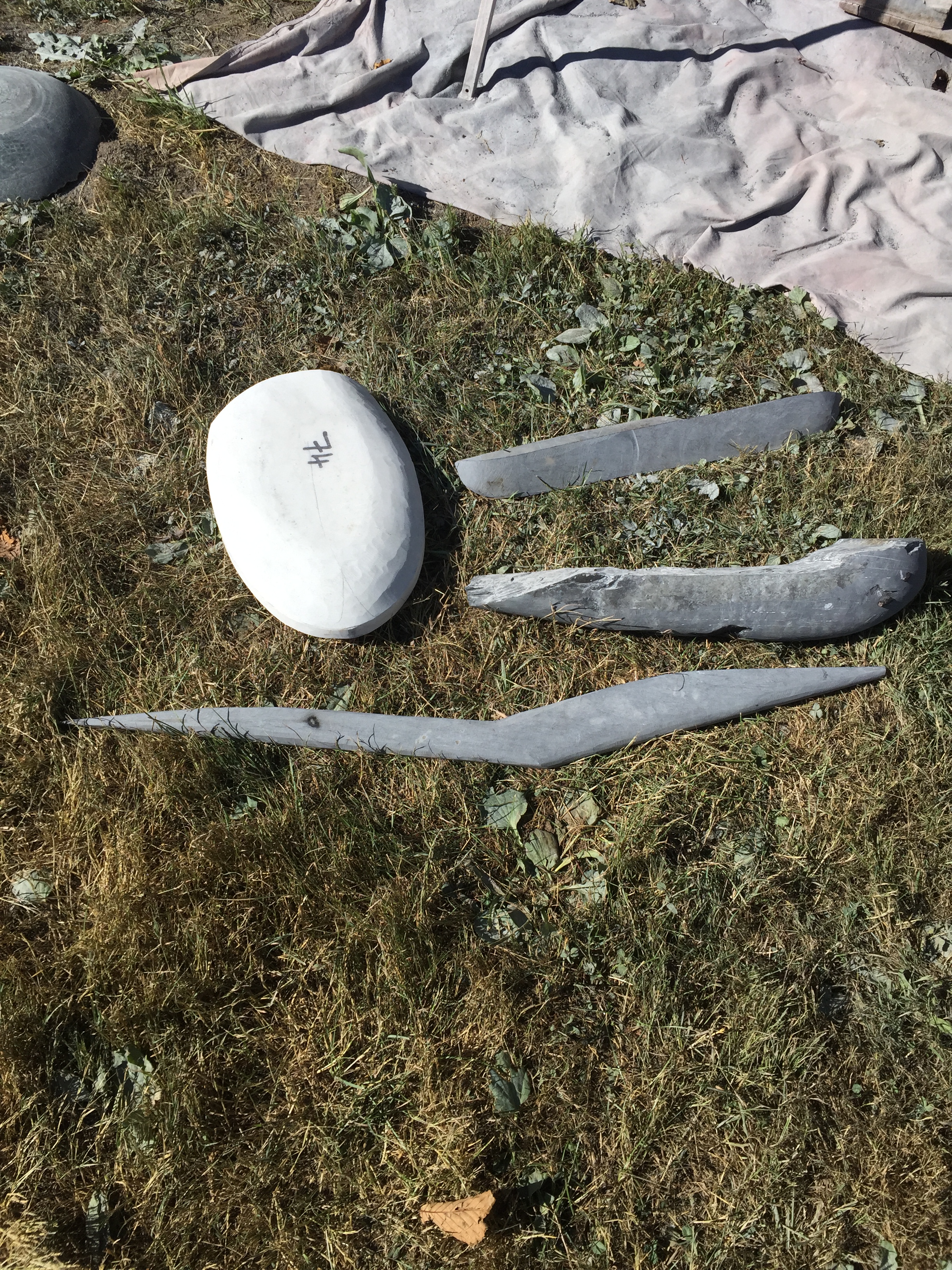

It was July and I was starting to get worried. I had a show scheduled for December and no work yet finished. One piece was started. I had zero time for a week of socializing at Camp Brotherhood, no matter how much I loved these people and this event. My home studio is set up for efficient work with my tools at arm’s length, just like a good kitchen layout. I have piles of stone to choose from. My wife, cats and comfortable bed were a 30-second walk from the studio. “What would it take” Camp Director Ben Mefford asked, “for me to make room in my schedule for Camp B this year?” I said the event needed to be different for me. I needed to be productive and I wanted to be challenged. Ben pushed further, “Give me an example.” A spontaneous phrase rolled off the tip of my tongue, “Five sculptors, five stones, five days.”I fleshed it out further as collecting five sculptors on one part of the field, give them each a stone and require that they complete the sculpture entirely in five days. This conversation started in July 2014, and there was not enough time to arrange this for the 2014 camp, but it could ramp up in 2015.
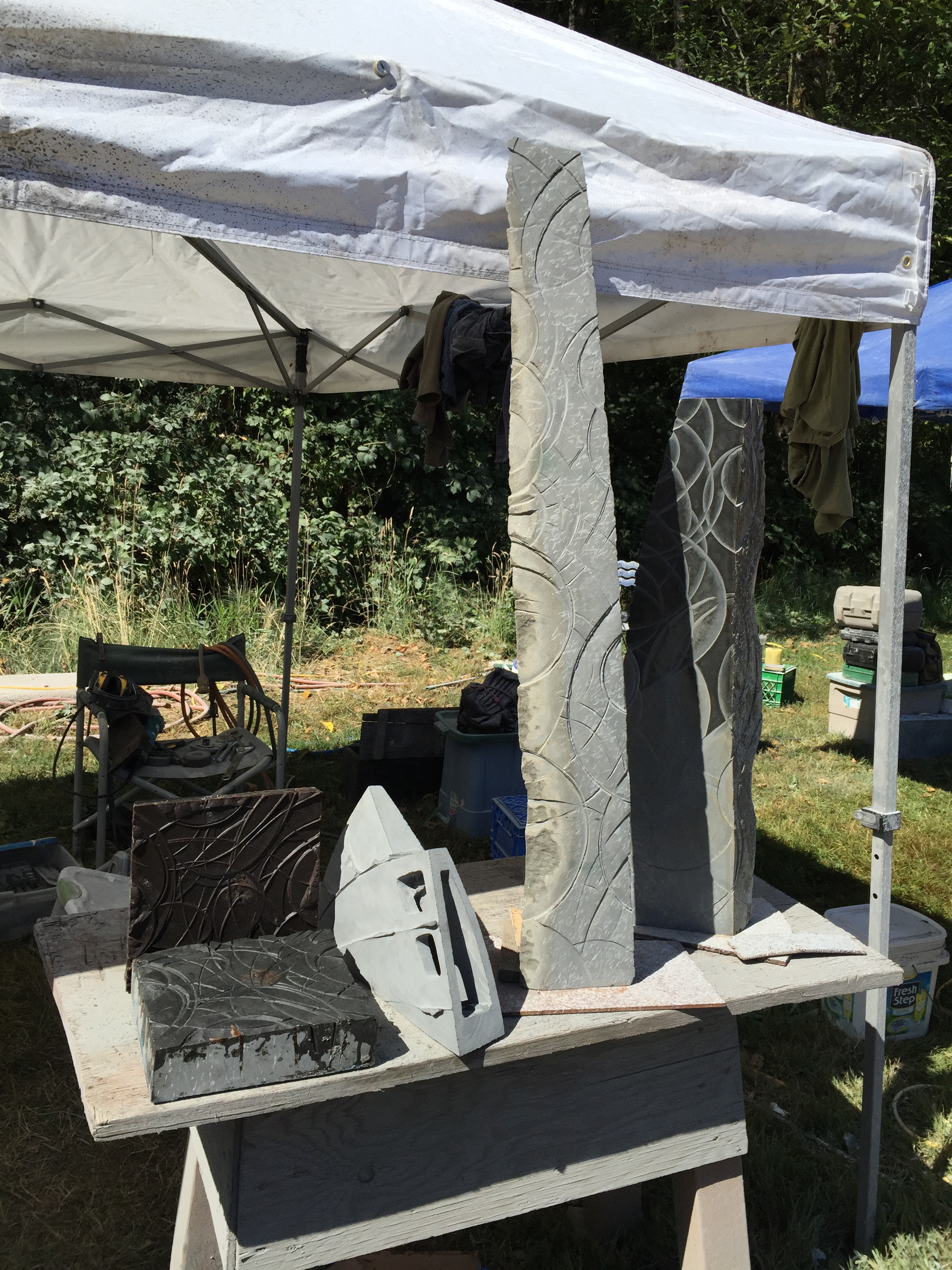 In discussing the idea with Tom Small he suggested that it be 5 pieces in 5 days for each sculptor, and I thought that was a better challenge. That would also allow me to rough out a piece and let it sit for at least a couple days so that I could look at it and think about the necessary refinements without the pressure to polish a form that wasn’t necessarily ready. I was also excited about loose-form sketching in stone.
In discussing the idea with Tom Small he suggested that it be 5 pieces in 5 days for each sculptor, and I thought that was a better challenge. That would also allow me to rough out a piece and let it sit for at least a couple days so that I could look at it and think about the necessary refinements without the pressure to polish a form that wasn’t necessarily ready. I was also excited about loose-form sketching in stone.The sketching really pushed my skills – forcing me to be efficient in my design and blocking. I had to visualize the completed piece thoroughly and mark the cuts without hesitancy. I have in the past taken a millimeter at a time off a stone to see if the resulting form pleased my eye. This week I couldn’t take a thousand passes with a grinder cup wheel – I needed to decide how deep to cut and push the blade into the stone to just that depth, so it forced me to make definite design decisions instead of delaying them until I had taken another millimeter.
I typically welcome the happy accident but am still fearful of ruining a stone with a wrong cut. I am learning to leave that fear behind and literally plunge forward. A big part of losing my hesitancy was in dropping the idea that each stone, either in its raw or partially completed state, was precious. The more precious the stone is the more difficult it is to cut. I needed to view the stone as just a raw material until it is complete.
Four other sculptors joined me in the 5/5/5 quest in 2015.
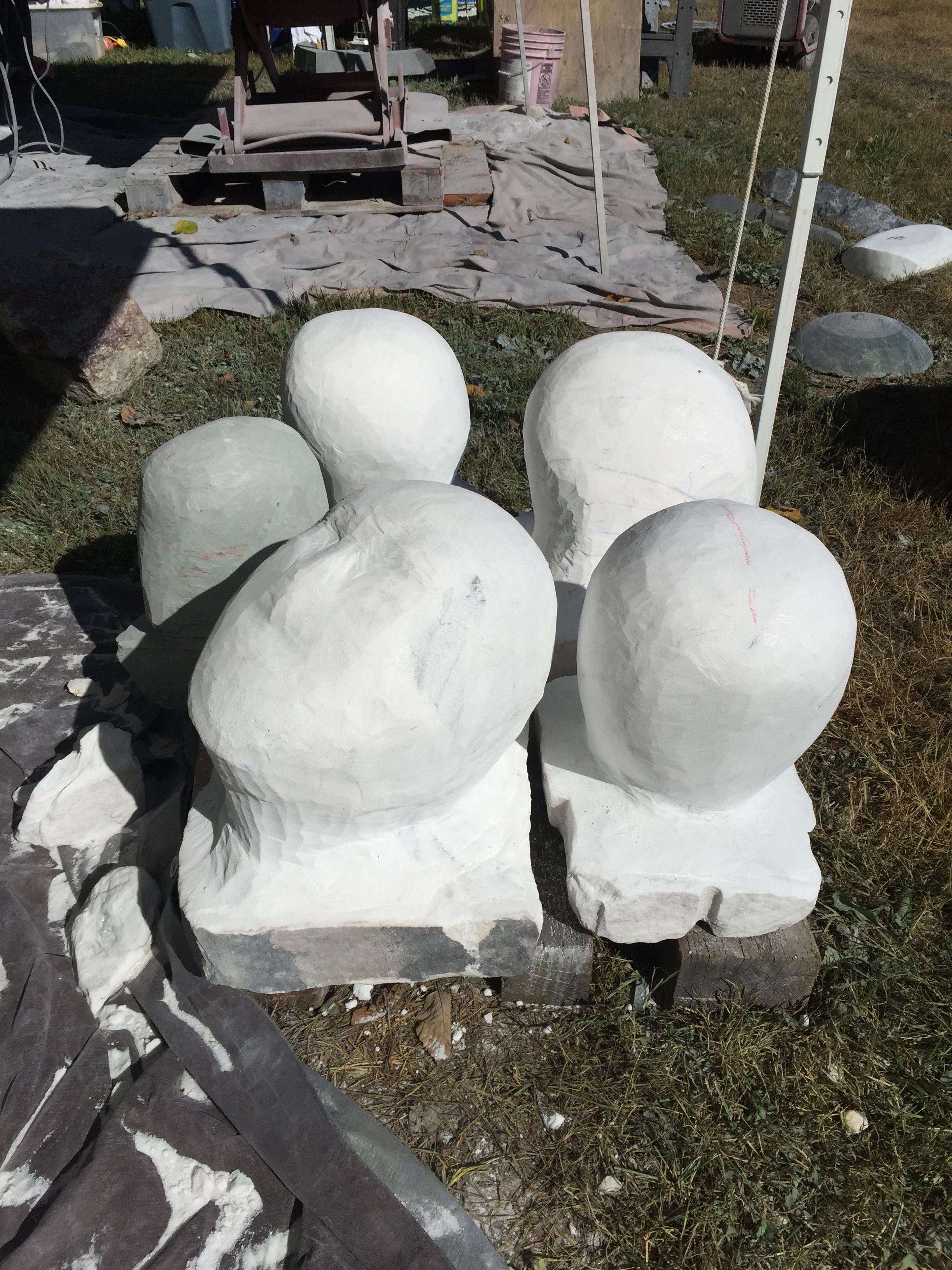
Tom Small thought it was an intriguing idea. Tom wanted some play time, the chance to flesh out several different ideas. The 5/5/5 format gave him the excuse to start small and try out several new concepts. He brought several pieces to work with, some of which he had done preparatory work on and others that were a totally new exploration.
Sue Taves accepted the challenge as an opportunity to work on a series that she had long-conceived but not had the opportunity to achieve. Sue’s work was a group of heads from the same stone. It was nice to have the first head present when she was working on the second, and to have the first two staring at her as she worked the third. By the time the fifth arrived she had a small party of four heads waiting. The heads got to talk to each other as the week went on. It would have been difficult to stay on the same project for a full five days back at Sue’s studio.
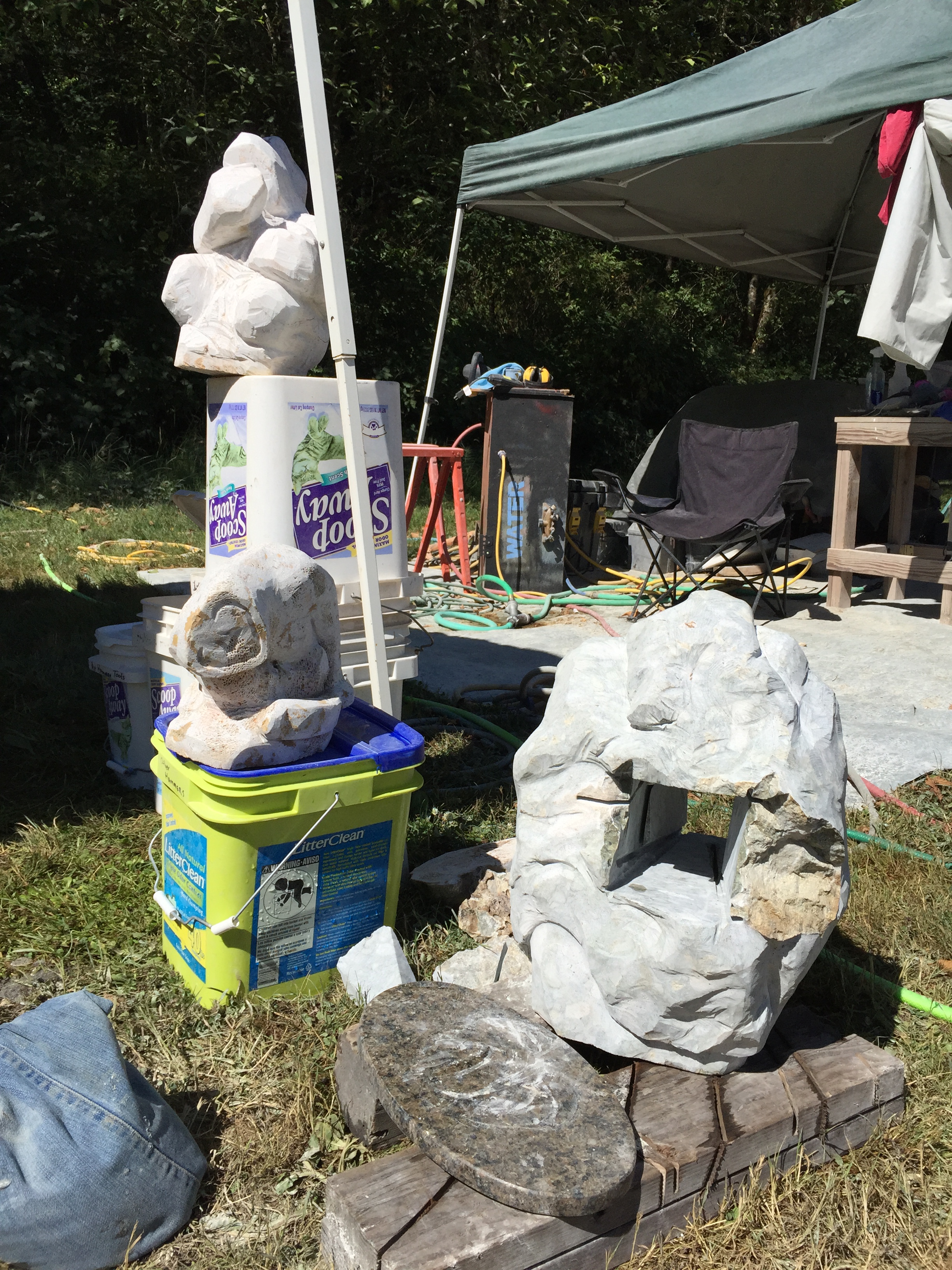 Tom Francis wanted the opportunity to work with several different types of stone. Tom warmed up with stones that he was comfortable with, but then dove into some conglomerates and other challenging stones that he wanted to try. The shortened time format required him to dive into the stones and just,“do it”.
Tom Francis wanted the opportunity to work with several different types of stone. Tom warmed up with stones that he was comfortable with, but then dove into some conglomerates and other challenging stones that he wanted to try. The shortened time format required him to dive into the stones and just,“do it”.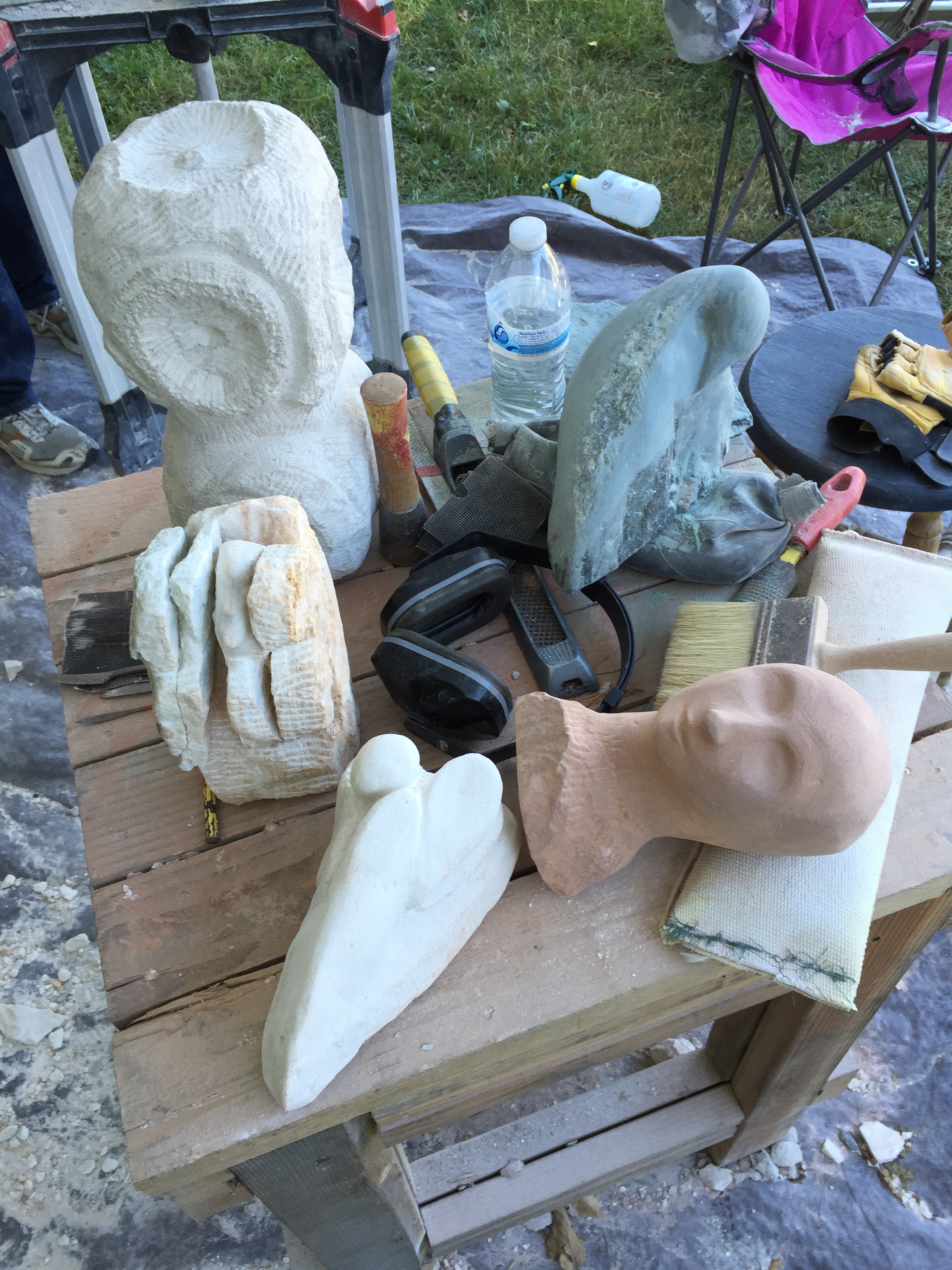 Therese Kingsbury was a first-time stone sculptor. She jumped into carving with great gusto, making five pieces over the course of the symposium. Therese did not start out to achieve five pieces, but just kept carving until the first one was done and then started the second. It was curiosity about how to carve combined with a desire to keep going until completion.
Therese Kingsbury was a first-time stone sculptor. She jumped into carving with great gusto, making five pieces over the course of the symposium. Therese did not start out to achieve five pieces, but just kept carving until the first one was done and then started the second. It was curiosity about how to carve combined with a desire to keep going until completion.All of the participants thought the sub-event was a worthwhile pursuit and looked forward to trying it again.

